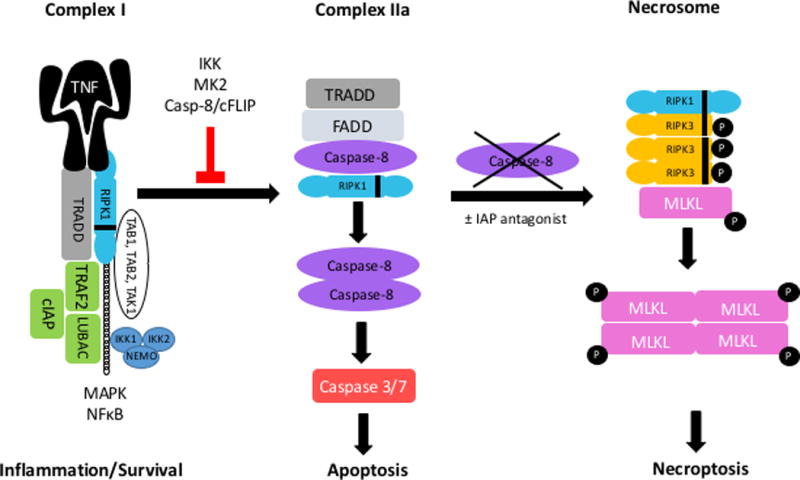Figure 2.

TNF binding to its receptor results in the formation of Complex-1 which includes TRADD, RIPK1, TRAF2, IAP1, IAP2 and LUBAC. Ubiquitination of RIPK1 results in the formation of a platform and subsequent recruitment of IKK1, IKK2, NEMO and TAB/TAK-1 complexes. This results in the activation of NF-κB and MAPK cascade, promoting stress response, inflammation and survival. When RIPK1 is not ubiquitinated, Complex-II forms made up of TRADD, FADD and caspase-8 and RIPK1 (IIa) or RIPK1/RIPK3, FADD, Caspase 8 and FLIPL (IIb, not shown) which leads to caspase-8-mediated activation of caspase 3/7 and apoptosis. In certain cells when caspase-8 is inhibited RIPK1, RIPK3, and MLKL form the necrosome, resulting in MLKL phosphorylation leading to its oligomerization and translocation to cell membrane to induce necroptosis.
